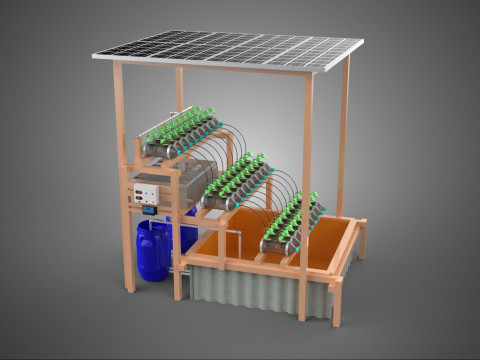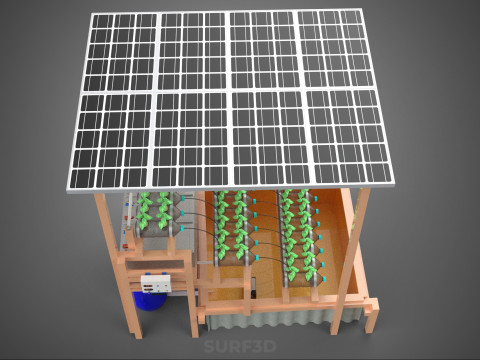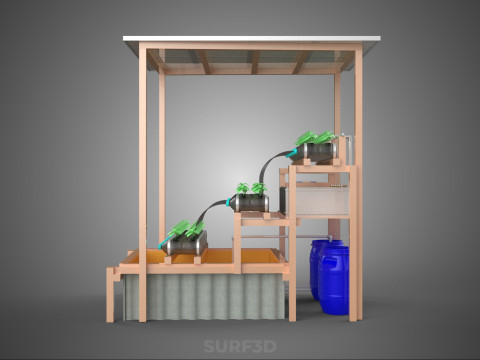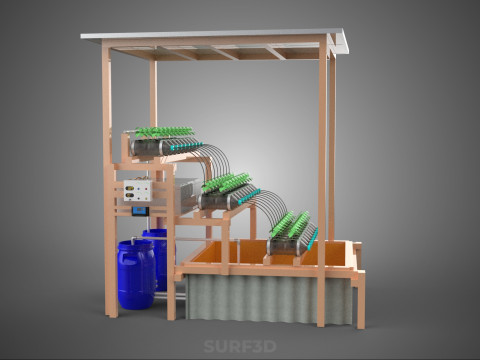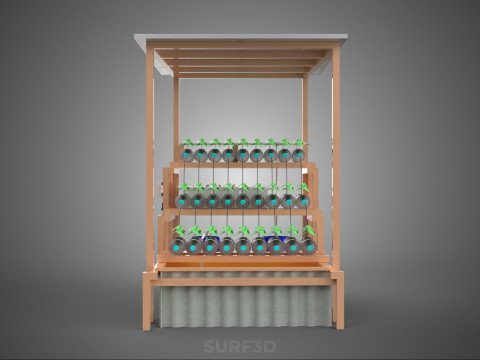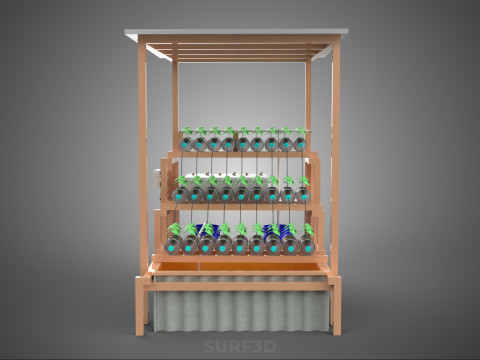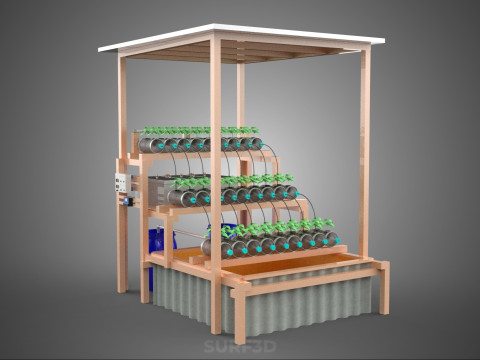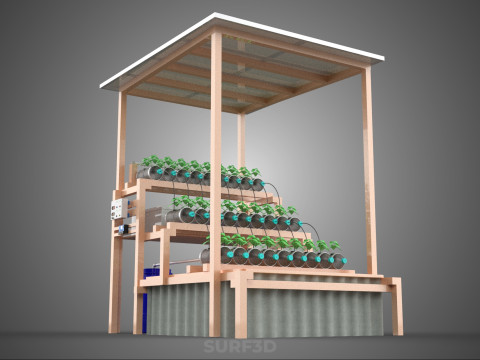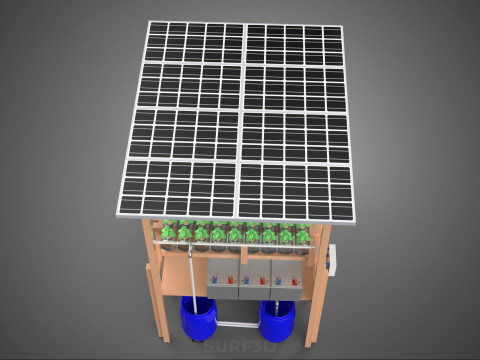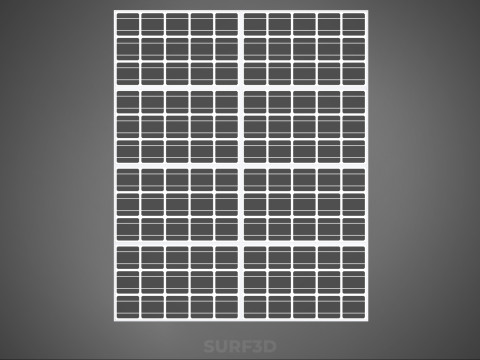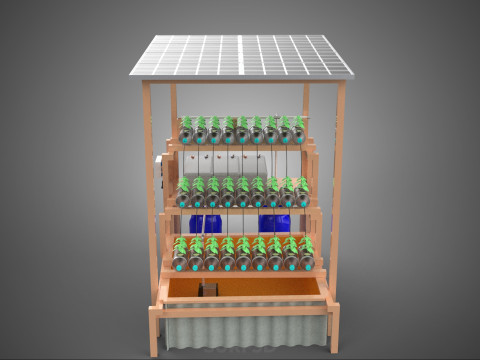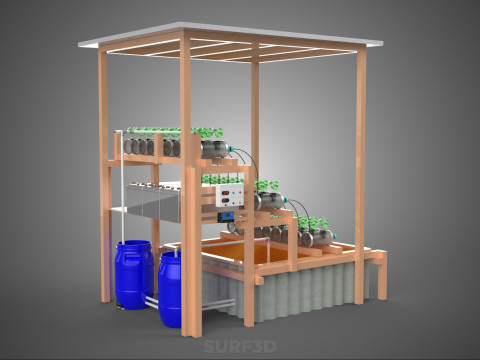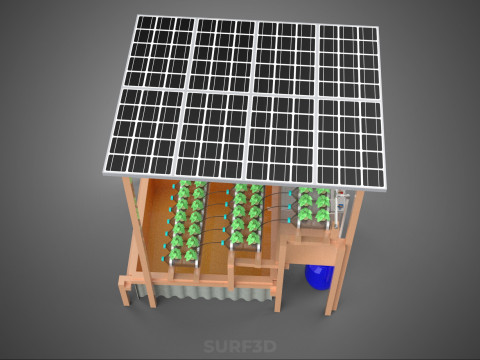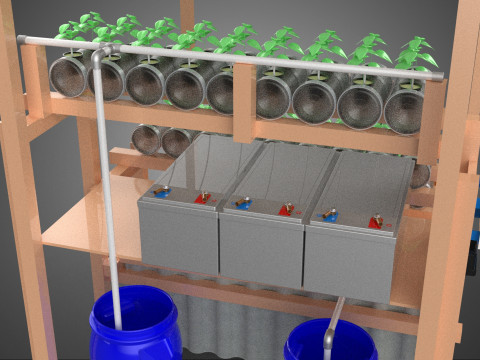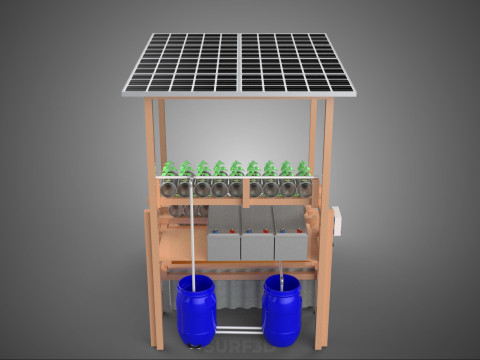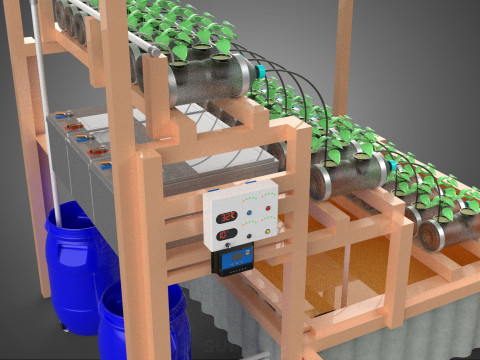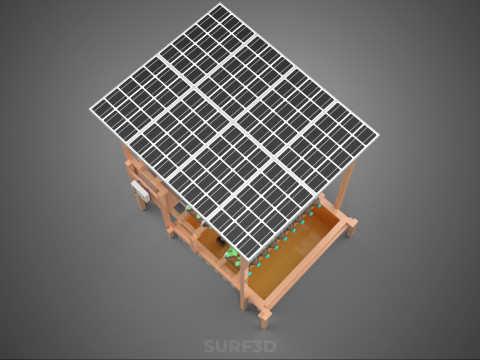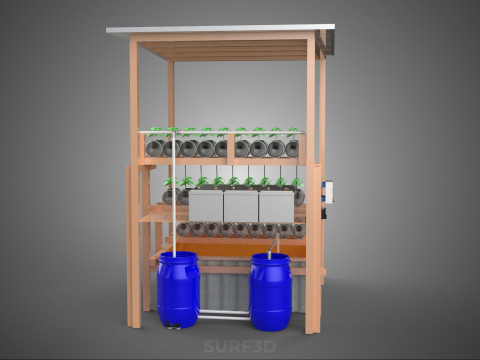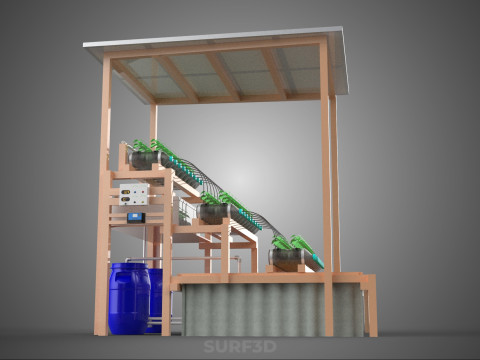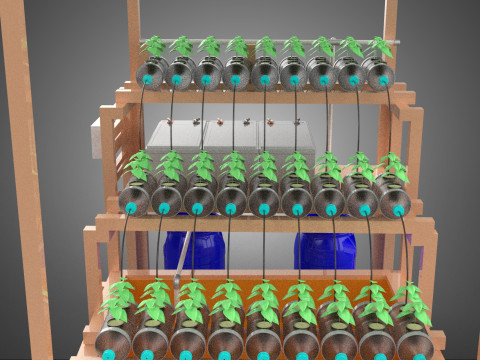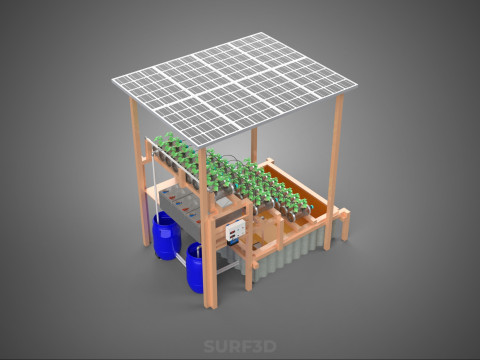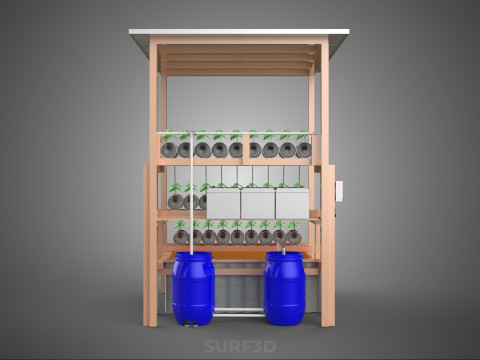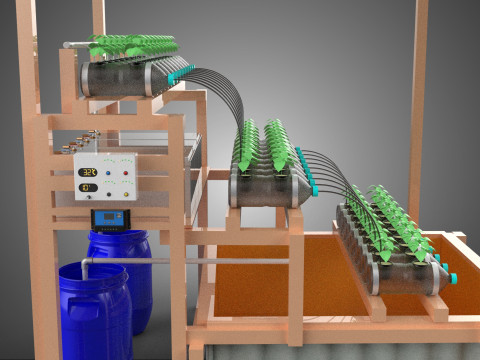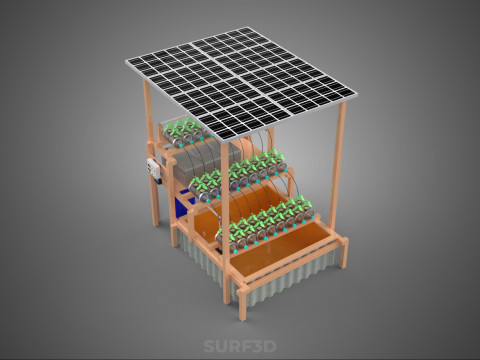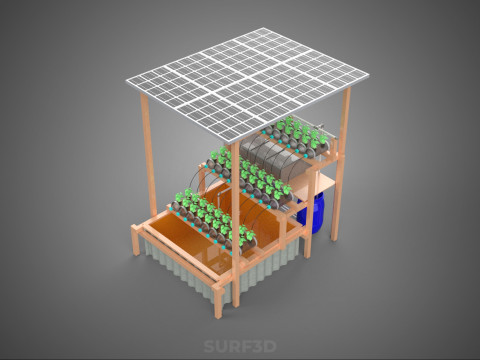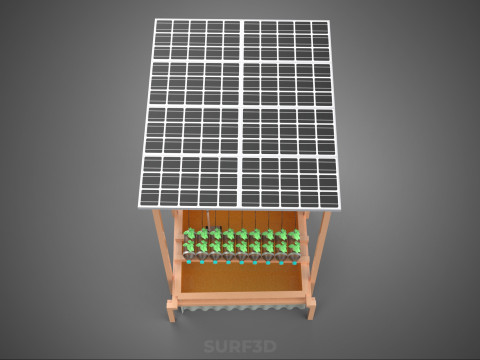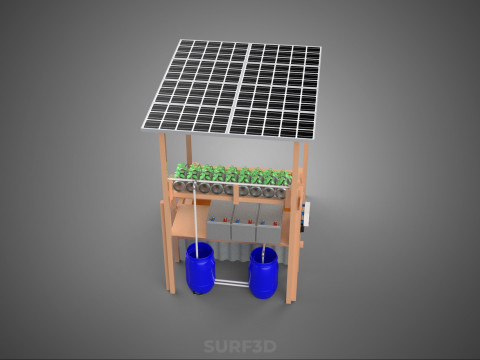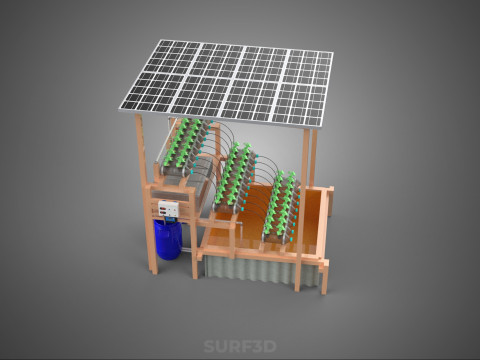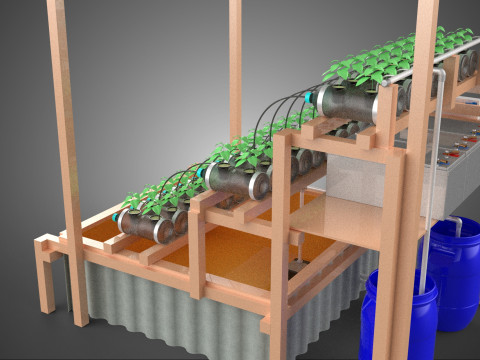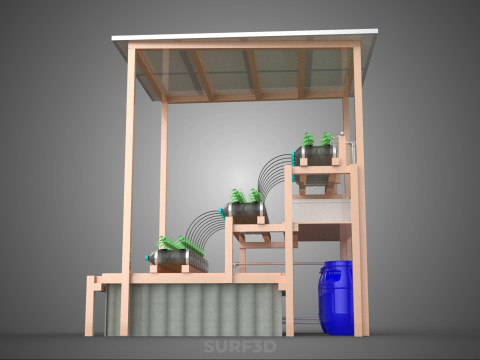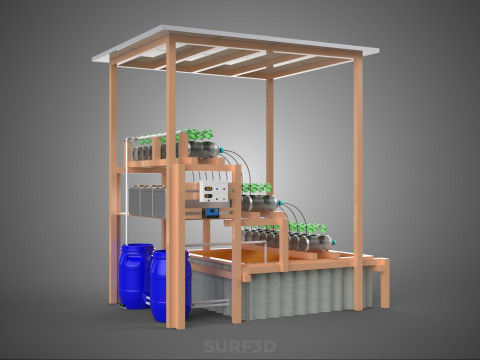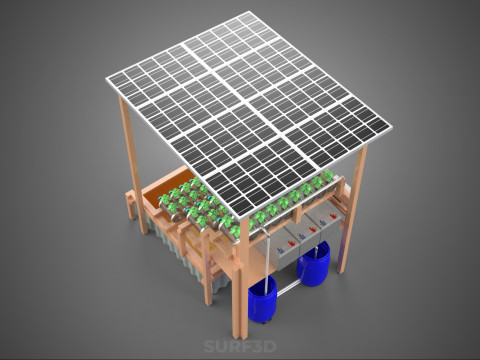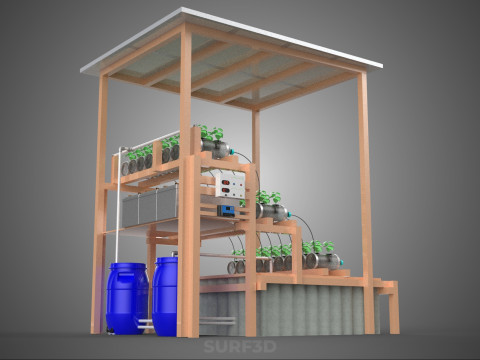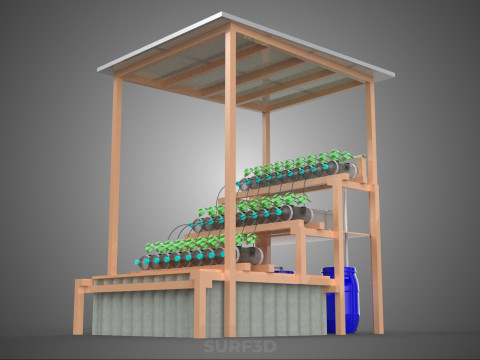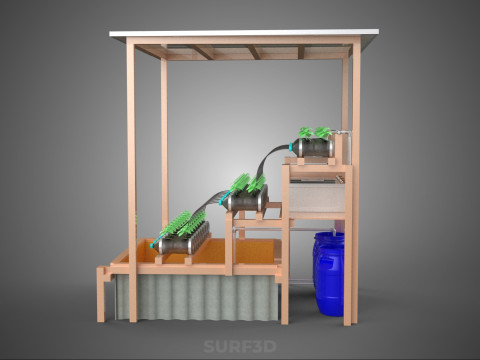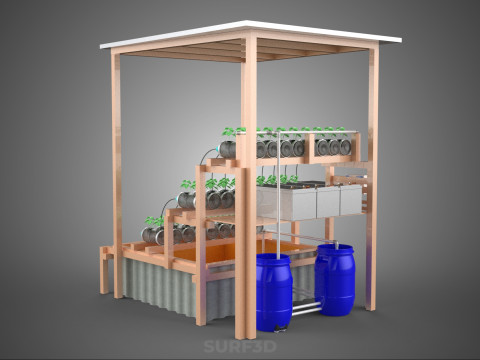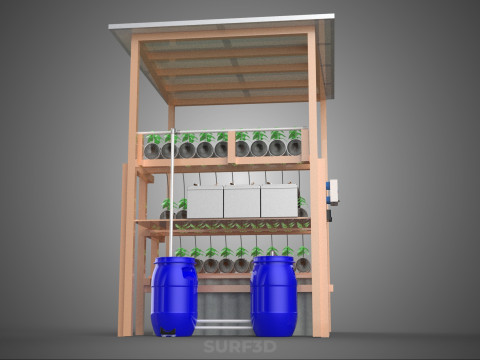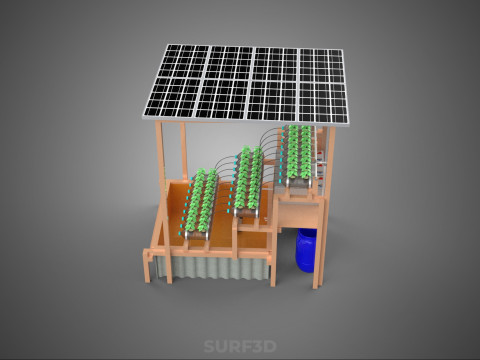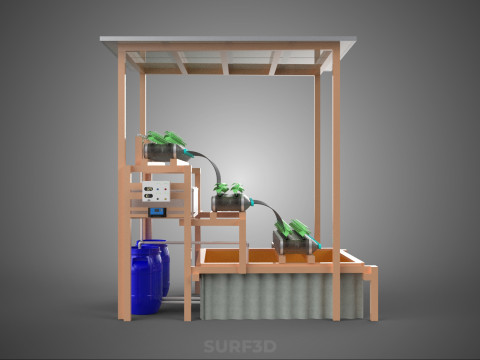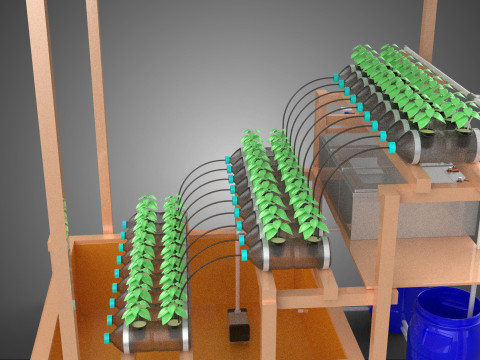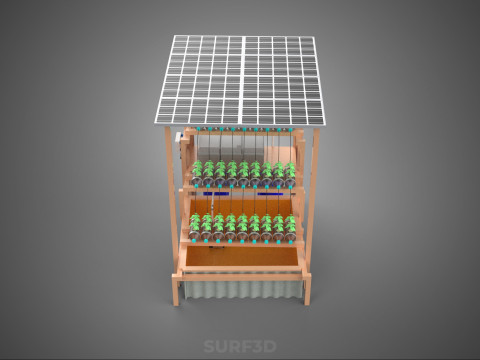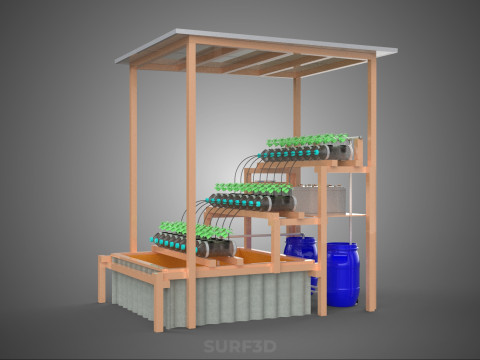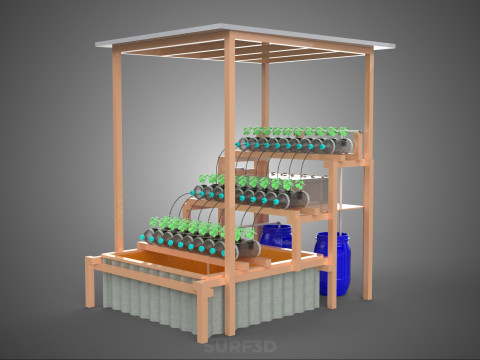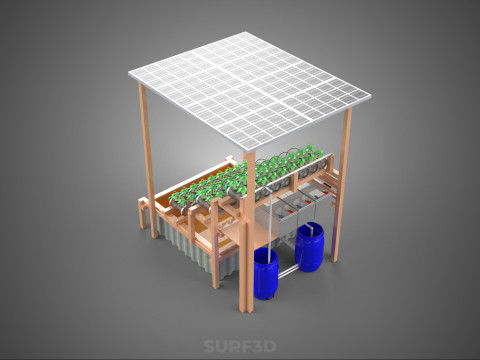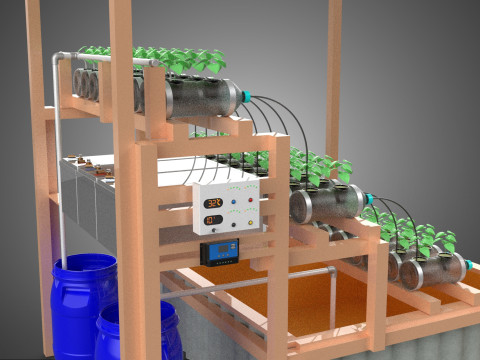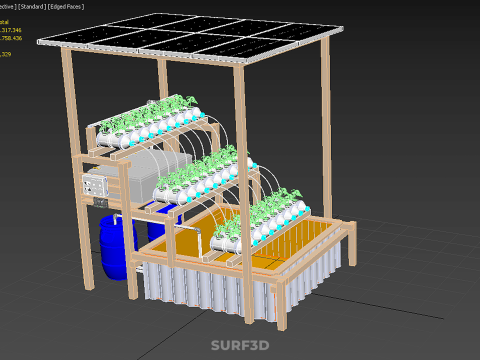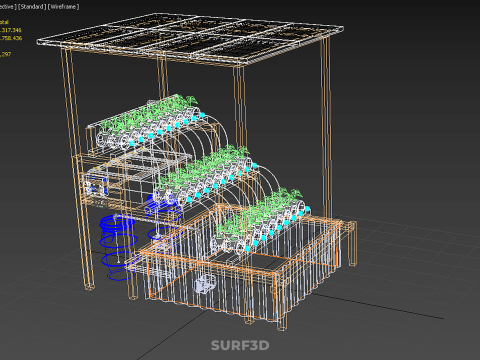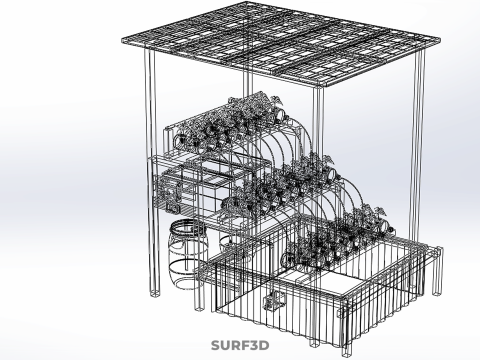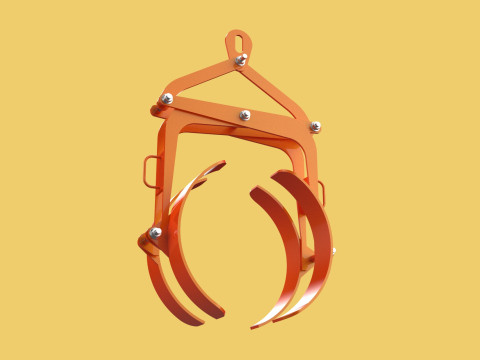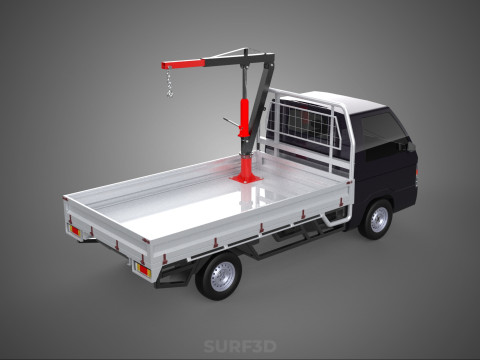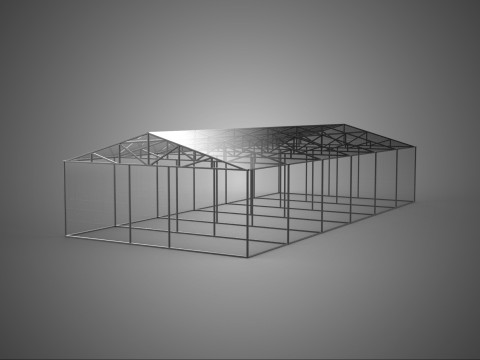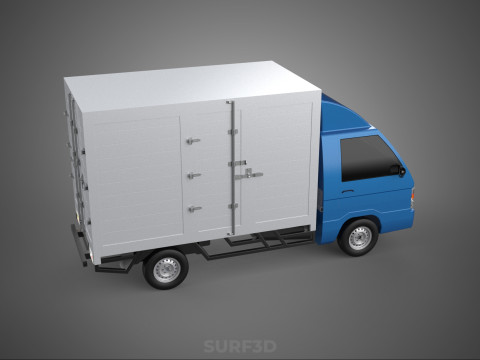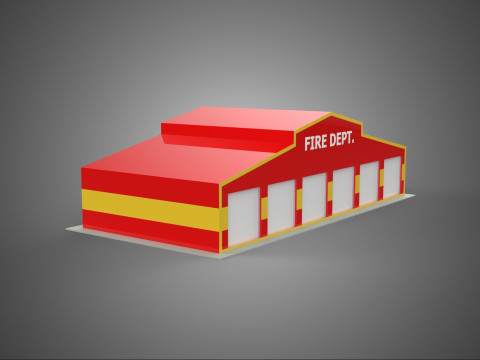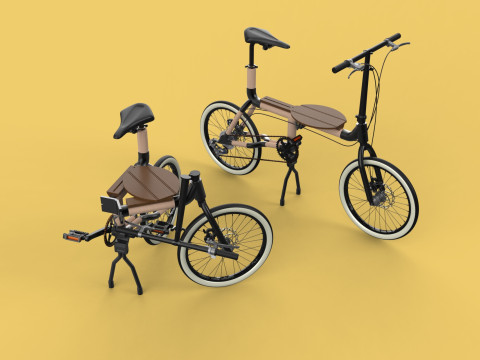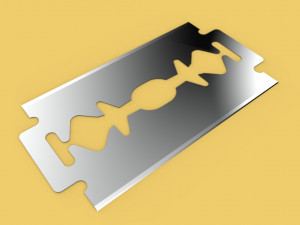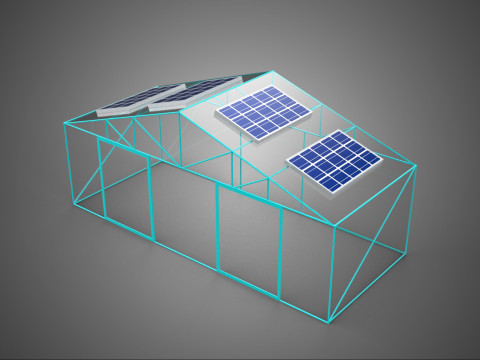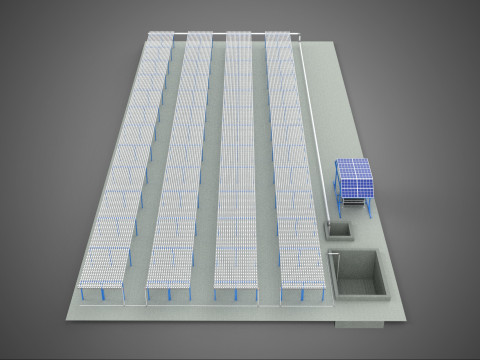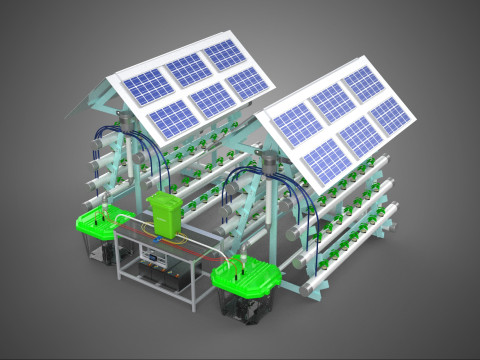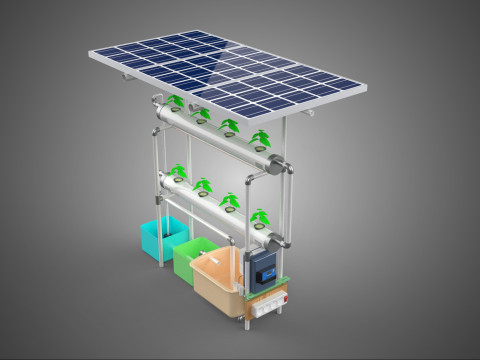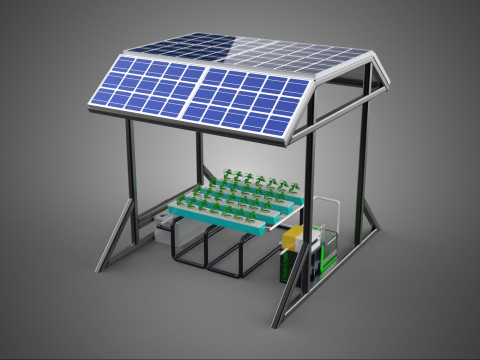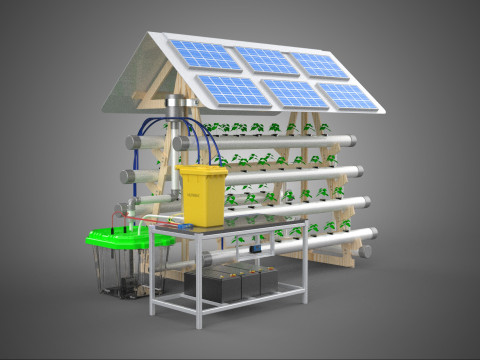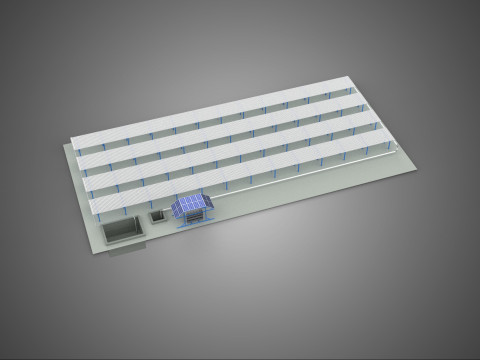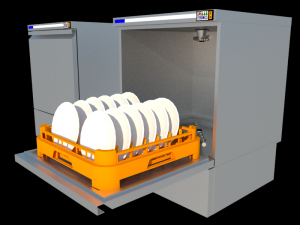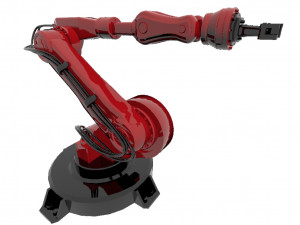GÜNEŞ PANELİ GÜÇLÜ IOT HİDROPONİK TESİSİ ŞİŞE KONTEYNER HAVUZU 3D Model
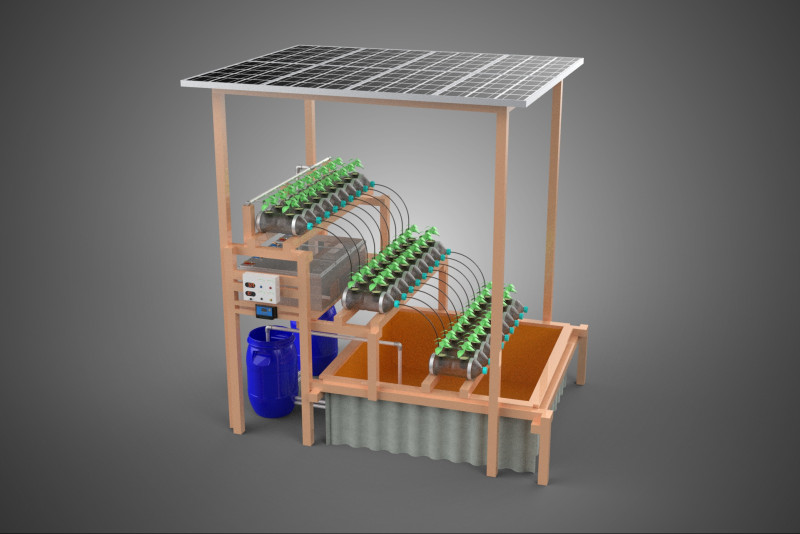
- Hazır formatlar: Autodesk AutoCAD (.dwg) 18.19 MBGLB (.glb / .gltf) 14.54 MBSketchUp (.skp) 5.16 MBStereolithography (.stl) 35.50 MBCollada (.dae) 32.09 MBAutodesk 3DS MAX (.max) 69.83 MBACIS(.sat) 25.24 MBIGES (.iges) 2.62 MBBlender3D (.blend) 32.30 MBWavefront OBJ (.obj) 26.33 MB3D Studio (.3ds) 9.59 MBAutodesk FBX (.fbx) 52.87 MBSTEP (.step) 2.37 MBRhinoceros (.3dm) 10.84 MB
- Poligonlar:2317346
- Noktalar:1758436
- Animasyon:No
- Dokulu:No
- Rigged:No
- Malzemeler:
- Low-poly:No
- Koleksiyon:No
- UVW mapping:No
- Kullanılan Eklentiler:No
- Baskıya Hazır:No
- 3D Tarama:No
- Yetişkin(+18) içerik:No
- PBR:No
- AI Eğitim:No
- Geometri:Poly NURBS
- Unwrapped UVs:Unknown
- Görüntülemeler:192
- Tarih: 2025-09-11
- Ürün ID:598264
GÜNEŞ PANELİ GÜÇLÜ IOT HİDROPONİK TESİSİ ŞİŞE KONTEYNER HAVUZU 3D Model dwg, glb, skp, stl, dae, max, sat, iges, blend, obj, 3ds, fbx, step, 3dm, Kimden surf3d
High-quality 3D assets at affordable prices — trusted by designers, engineers, and creators worldwide. Made with care to be versatile, accessible, and ready for your pipeline.
Included File Formats
This model is provided in 14 widely supported formats, ensuring maximum compatibility:
• - FBX (.fbx) – Standard format for most 3D software and pipelines
• - OBJ + MTL (.obj, .mtl) – Wavefront format, widely used and compatible
• - STL (.stl) – Exported mesh geometry; may be suitable for 3D printing with adjustments
• - STEP (.step, .stp) – CAD format using NURBS surfaces
• - IGES (.iges, .igs) – Common format for CAD/CAM and engineering workflows (NURBS)
• - SAT (.sat) – ACIS solid model format (NURBS)
• - DAE (.dae) – Collada format for 3D applications and animations
• - glTF (.glb) – Modern, lightweight format for web, AR, and real-time engines
• - 3DS (.3ds) – Legacy format with broad software support
• - 3ds Max (.max) – Provided for 3ds Max users
• - Blender (.blend) – Provided for Blender users
• - SketchUp (.skp) – Compatible with all SketchUp versions
• - AutoCAD (.dwg) – Suitable for technical and architectural workflows
• - Rhino (.3dm) – Provided for Rhino users
Model Info
• - All files are checked and tested for integrity and correct content
• - Geometry uses real-world scale; model resolution varies depending on the product (high or low poly)
• • - Scene setup and mesh structure may vary depending on model complexity
• - Rendered using Luxion KeyShot
• - Affordable price with professional detailing
Buy with confidence. Quality and compatibility guaranteed.
If you have any questions about the file formats, feel free to send us a message — we're happy to assist you!
Sincerely,
SURF3D
Trusted source for professional and affordable 3D models.
More Information About 3D Model :
A Solar Panel Powered IoT Hydroponic Plant Bottle Container Pond refers to an integrated, small-scale, and often self-contained system designed for cultivating plants without soil, utilizing renewable solar energy, and incorporating Internet of Things (IoT) technology for automated monitoring and control. This system typically repurposes or utilizes compact containers, such as bottles or small tubs, which function as both the plant growth chamber and the nutrient solution reservoir, akin to a miniature pond. It represents a convergence of sustainable agriculture, renewable energy, and smart technology, often employed for urban gardening, educational purposes, or hobbyist applications.
**System Components and Functionality:**
1. **Hydroponic Subsystem:** At its core, the system employs hydroponic principles, where plants are grown in an inert medium (or sometimes without any medium, with roots directly in the solution) while receiving essential mineral nutrients dissolved in water. Common configurations include Deep Water Culture (DWC), where plant roots are submerged in the nutrient solution, or rudimentary wick systems. The "pond" aspect refers to the contained volume of nutrient-rich water within the bottle or container that serves as the primary root zone and nutrient delivery mechanism. This design emphasizes water conservation and efficient nutrient delivery compared to traditional soil-based agriculture.
2. **Solar Power Integration:** The system's energy requirements are met by a small-scale photovoltaic (PV) array, commonly a solar panel. This panel converts sunlight into electrical energy, which is then typically stored in a rechargeable battery (e.g., lithium-ion or lead-acid). This stored energy powers all active components, including water pumps for nutrient circulation (if applicable), air pumps for oxygenating the nutrient solution, sensors, microcontrollers, and communication modules. Solar power ensures the system's autonomy, reduces operational costs, and minimizes its environmental footprint, making it suitable for off-grid deployment.
3. **Internet of Things (IoT) Module:** The IoT component provides intelligence and remote accessibility. It typically comprises:
* **Sensors:** These gather critical environmental data, such as water temperature, pH levels (acidity/alkalinity), Electrical Conductivity (EC) for nutrient concentration, water level, and potentially ambient air temperature and humidity.
* **Microcontroller:** A low-power embedded system (e.g., Arduino, ESP32, Raspberry Pi Zero) processes sensor data, executes control logic, and manages communication.
* **Communication Module:** Often Wi-Fi or Bluetooth, enabling the system to transmit data to a cloud-based platform or a local device, and receive commands.
* **Actuators:** These may include miniature pumps (for nutrient solution circulation or pH adjustment), solenoid valves, or small fans, controlled by the microcontroller based on sensor readings and programmed parameters.
* **User Interface:** A mobile application or web dashboard allows users to monitor real-time data, view historical trends, receive alerts, and remotely adjust system parameters or trigger actions.
4. **Container Design:** The "bottle container pond" aspect signifies the physical structure. These are typically compact, often repurposed plastic bottles or small, opaque containers designed to prevent algae growth in the nutrient solution. They are configured to hold the nutrient reservoir, support the plant (e.g., via a net pot), and house or mount the various electronic components. This small-scale design facilitates modularity, space efficiency, and allows for easy relocation.
**Operational Principles:**
During daylight hours, the solar panel charges the battery. The IoT module continuously monitors the hydroponic environment. Should a parameter, such as pH or EC, deviate from the optimal range, the microcontroller can trigger an appropriate actuator (e.g., activating a pump to add pH-adjusting solution) or send an alert to the user. Data is logged and transmitted, providing insights into plant health and system performance. The stored solar energy ensures continuous operation, even during periods of low light or at night.
**Advantages and Applications:**
Advantages include resource efficiency (reduced water usage), accelerated plant growth, elimination of soil-borne diseases, and remote management. The solar power aspect provides sustainability and energy independence. Its small footprint makes it ideal for urban environments, balconies, or indoor cultivation where space is limited. Furthermore, these systems serve as excellent educational tools for demonstrating principles of renewable energy, hydroponics, and smart agriculture. They are also popular among hobbyists and in resource-constrained areas requiring low-maintenance, off-grid food production.
**Challenges and Considerations:**
Key challenges include the initial setup complexity, calibration of sensors, maintenance of nutrient solutions, and the potential for component failure. Scalability can be limited by the compact design. Ensuring adequate solar power for all components, especially those with intermittent high power draw (e.g., pumps), requires careful sizing of the solar panel and battery.
In conclusion, the Solar Panel Powered IoT Hydroponic Plant Bottle Container Pond represents an innovative, sustainable, and intelligent approach to small-scale plant cultivation, leveraging modern technology to enhance efficiency, convenience, and accessibility in horticulture.
KEYWORDS: Hydroponics, Solar Power, Internet of Things, Smart Agriculture, Sustainable Gardening, Urban Farming, Renewable Energy, Plant Cultivation, Automated System, Soilless Culture, Remote Monitoring, Deep Water Culture, Nutrient Solution, Sensors, Microcontroller, Photovoltaic, Energy Storage, Water Conservation, DIY Hydroponics, Educational Tool, Off-Grid System, Container Gardening, Plant Health, Environmental Monitoring, Data Logging, Precision Agriculture, Small-Scale Farming, Resource Efficiency, Green Technology, Self-Sufficient
Daha fazla formata mı ihtiyaç duyuyorsunuz?
Farklı bir formata ihtiyaç duyuyorsanız lütfen destek ekibimize bir talep açarak ihtiyacınızı belirtiniz. 3D modelleri şu formatlara dönüştürebiliriz: .stl, .c4d, .obj, .fbx, .ma/.mb, .3ds, .3dm, .dxf/.dwg, .max. .blend, .skp, .glb. 3d sahneleri dönüştürmüyoruz ve .step, .iges, .stp, .sldprt gibi formatlar.!Kullanım Bilgileri
GÜNEŞ PANELİ GÜÇLÜ IOT HİDROPONİK TESİSİ ŞİŞE KONTEYNER HAVUZU - Telifsiz bu 3B modeli, Temel veya Genişletilmiş Lisans uyarınca hem kişisel hem de ticari amaçlarla kullanabilirsiniz.Temel Lisans, dijital reklamlar, tasarım ve görselleştirme projeleri, ticari sosyal medya hesapları, yerel uygulamalar, web uygulamaları, video oyunları ve fiziksel veya dijital son ürünler (hem ücretsiz hem de satılan) dahil olmak üzere çoğu standart kullanım durumunu kapsar.
Genişletilmiş Lisans, Temel Lisans kapsamında verilen tüm hakları, kullanım sınırlaması olmaksızın içerir ve 3B modelin Telifsiz koşullar altında sınırsız ticari projede kullanılmasına olanak tanır.
Daha fazla oku


 English
English Español
Español Deutsch
Deutsch 日本語
日本語 Polska
Polska Français
Français 中國
中國 한국의
한국의 Українська
Українська Italiano
Italiano Nederlands
Nederlands Türkçe
Türkçe Português
Português Bahasa Indonesia
Bahasa Indonesia Русский
Русский हिंदी
हिंदी